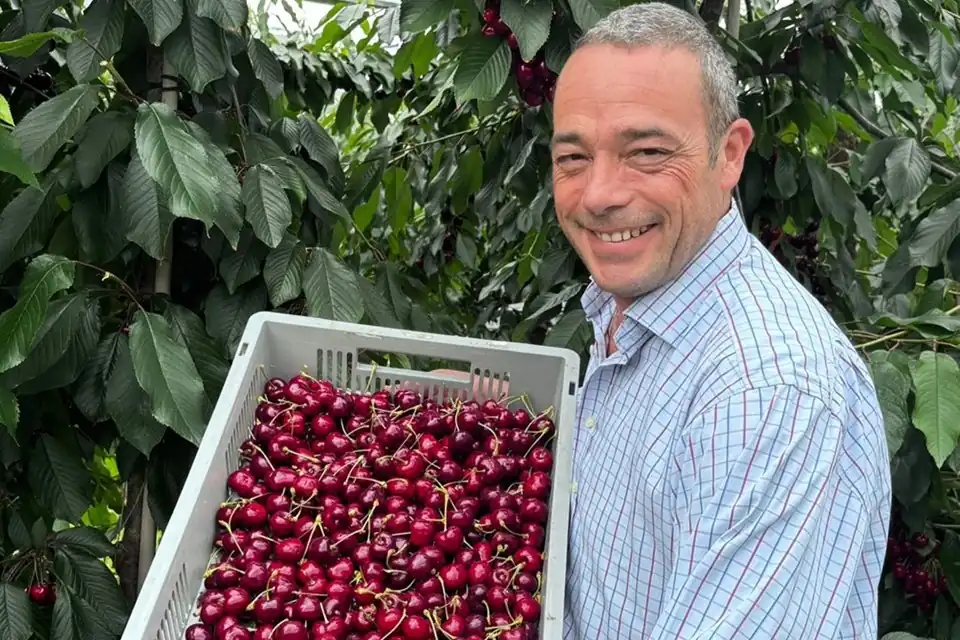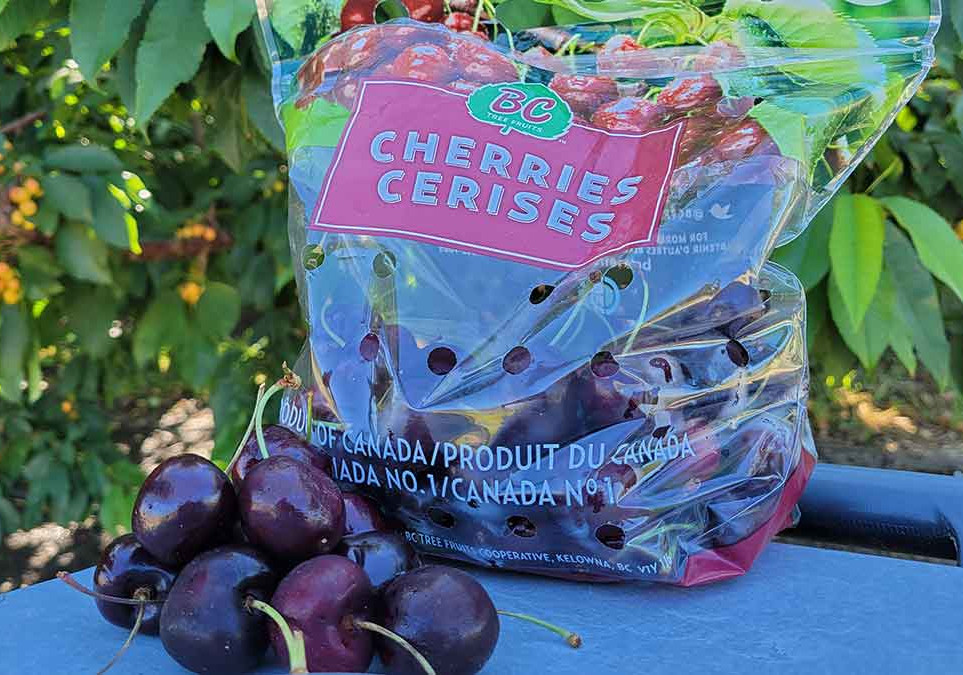All indications are that most of the cherry trials in the country were not as successful as hoped until last year. In response, companies interested in the crop are starting trials with new varieties that require less cold.
However, Peruvians face several challenges, from the development of agronomic management of the fruit - preferably on the coast - to the possibility of going to market in October and having a quality equal to or better than Chile, which has an established industry.
Santina, Lapins and Brooks have been the varieties with which, in recent years, several trials have been conducted in great secrecy to determine whether cherries could be a real production alternative in Peru. There have been several companies, between ten and fifteen to be precise, that have carried out trials, but without achieving the desired results to make the commercial leap.
According to Gerd Burmester, director of Vecs Peru, interviewed by Redagrícola, there are several reasons for this negative result, but the main one has to do with the selected varieties, which are not adapted to the country's climatic conditions.
Therefore, thanks to the recent protocols established by Senasa, which allowed the entry of new genetic material, the companies tried new varieties with low chilling hours requirements, obtained from genetic improvement programmes such as Bloom Fresh and also those developed by the universities of Bologna (Italy) and Gerogia (USA). "All have been developed for lower chilling hour requirements and are the ones that are being evaluated," comments
What are the reasons for the lack of commercial development of the cherry tree?
Last year I did a report for a Chilean company interested in entering Peru to produce cherries. What I was able to learn was that between ten and fifteen companies were doing various experiments, some more serious than others. All had failed until last year. None were successful for various reasons.
One of the main reasons is that cherry trees need a minimum of cold hours to develop in the field. Depending on the variety, they may need 800 to 1,500 hours of cold. What does this mean? They need temperatures below 7°C and this is unusual on the coast, perhaps in some of the valleys of Nasca, Moquegua or Tacna, where they can reach 100 chilling hours in a normal year. However, in a year like this, this will never happen.
Have tests also been carried out in the mountains?
In trials in the highlands, such as in the Callejón de Huaylas (Ancash), the Mantaro Valley (Junín) or Arequipa, temperatures are lower, but there are other variables such as higher radiation or the altitude itself, as well as lower humidity. All these factors influenced the trials and for some reason the fruit did not take root.
A few months ago, at an event in Chile, it was said that Camposol could have its first commercial exports in 2024/25
This information caught my attention, but doing some research it seems that Camposol has already disproved it. If someone says we will have fruit in 2024 or 2025, you have to bear in mind that we are only in 2023. From what we have observed in trials, there have been no problems with flowering, but with fruit set.
How do you know that the flower that will be obtained in 2024 will set? No one knows, and you don't know because the tests were done with varieties available in the country, such as Santina, Lapins and Brooks, which need hours of cold weather. So one of the conclusions of all these tests is that we will have to start again with varieties that require less cold.
Are these varieties suitable for the Peruvian climate?
IFG (now Bloom Fresh), SunWorld, the University of Bologna and the University of Georgia have developed varieties with lower refrigeration hour requirements. Senasa has already established a protocol for its entry. I do not think it is clear which varieties are best suited with lower refrigeration hours.
Remember that all tests are done, as with grapes, at the place where the variety is obtained, whether it is in California, Bologna or Georgia, depending on where the nursery is located, and from there you have to come and test them here. So with this new generation of cherry varieties, we have to start testing. That is why I say that the cherry progress here is very incipient, because we are still at the beginning of the trials.
So, excluding production in the highlands, what would be the best area?
The ideal location is one where you can produce properly and have efficient logistics. The big agro-industrial companies that have the resources to do these tests and are interested in having a new profitable crop are based on the coast. There are the valleys of Ica, where winter temperatures are 8 or 9 degrees.
Ideally, you should have a variety that can produce adequately in those conditions. Going to the highlands means complicating life, no doubt, because of logistics and atomised land space.
How long will this new phase of experimentation with the new varieties last?
From what I estimate, we will not see cherries for at least four years, hoping for success in the following trials. Then comes the challenge of getting the cherries to produce before Chile's production window. Chile starts producing significantly in December and January. If we could produce in October, that would be the best thing, because we would find a more underserved market.
Which markets are we talking about and which ones could Peru bet on?
Well, one that pays well and has a short transit time. The reality is that Chile exports between 90% and 95% of its volume to China. This is a high-risk trade position, since it depends on a single market. Furthermore, sales are different if you arrive before or after Chinese New Year, as there is a major change in values.
The cherry is an appetising gift used in China. The cherry is used a lot for this purpose. From the beginning, it seems to me that Peru should diversify its markets and not focus on one market.
In any case, the commercial opportunities for the Peruvian cherry are very interesting once commercial management of the crop is achieved?
Today it is difficult to say for sure. Last year Chile produced 300,000 tonnes and in two or three years' time they should produce twice that amount; they are also working with early varieties, in other words they are trying to produce earlier.
What will happen in four years? I don't know, I don't know how China will fare in terms of cherry production, which is happening, for example, for grapes, at a significant rate. So, you cannot go forward hoping for an interesting market. No, that remains to be seen.
Although she says the ideal would be to go to neighbouring markets, China can always be an interesting market
In China, consumption is apparently growing at a very fast pace because Chile has grown aggressively and prices are still good. In that society, with the growth of the middle class, there is a greater capacity to buy imported fruit, especially fruit like cherries, which are expensive.
What characteristics must the cherry sought after by the Chinese market have?
Chile has succeeded in producing larger calibre cherries every year and, as a result, smaller calibre cherries are relegated and destined for other markets. Therefore, Peru is presented with the challenge of producing an attractive and well-priced large-calibre cherry in China. This will certainly be the main market for Peru as well. The consumer has become more and more demanding and its main producer, Chile, has been up to the task, providing an ever better product.
Will it be another challenge for Peru, not only to produce fruit, but also that it is of high quality?
China demands high quality for all the fruit it buys, especially cherries. Moreover, it is not a short crossing; although in a few years' time we will have the port of Chancay up and running and some shipping companies will operate direct services to China, which will mean that there will be fewer days' services.
In terms of investments, will the cherry be similar to the blueberry sector in terms of costs?
I do not have this data, but you have to estimate how much the blueberry gives you per year. The cherry tree will give you production after three or four years, so in that sense it is more like the avocado sector. It is a question of investing and waiting.
Do you think that along the way some of the companies that are trying this crop have been discouraged?
Yes, some were discouraged. Some companies, for example, tried Piura on a very small scale and abandoned the project after a short time. Other companies are continuing, like Camposol, which is the one with the most serious projects. They are even about to market fruit from Chile for the first time, where they have made investments. It is definitely a serious project, because they already know how to produce the cherries and they are exploring four different places in Peru.
What other steps are needed to set up a Peruvian cherry enterprise?
The biggest challenge is the Peruvian producers, who will certainly continue to insist on cultivating this crop. The participation of institutions such as Senasa is also important, so that they can establish protocols that protect and safeguard other crops, but are reasonable in their demands on producers.
On the other hand, it is also important for the unions to work together to promote collaboration between the testing companies. It is clear that they are all in competition with each other, but especially at this stage collaboration is important and valuable.
Do you think it is only a matter of time before the management formula is found in Peru?
I believe it will be possible, and not because it has been achieved with other fruits or because Peruvian entrepreneurs are strong and nothing is impossible, but simply because agriculture can produce different crops in different places, using different farming methods. Therefore, I believe it is possible, but not in the short term.
Fonte: Redagrícola
Foto: Vecs Perù
Cherry Times - Tutti i diritti riservati










